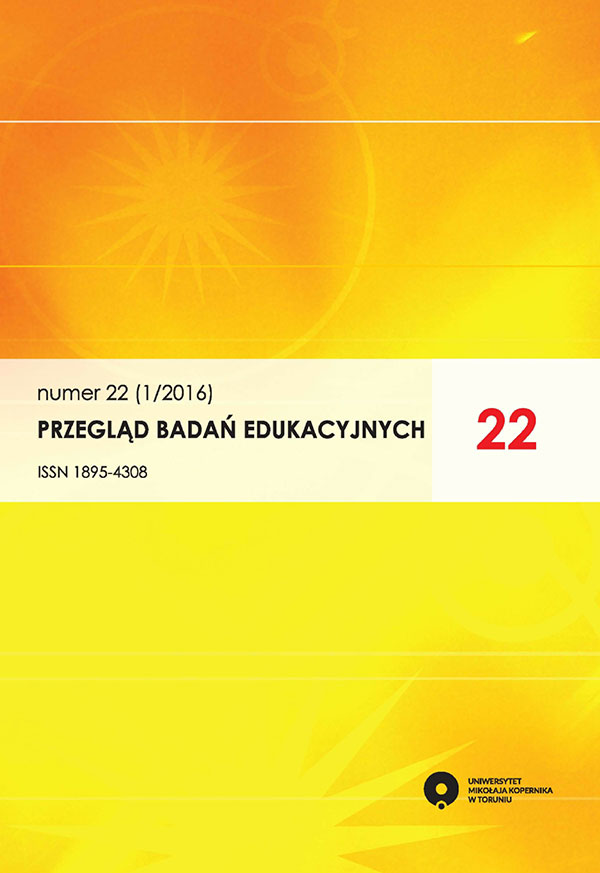The Effectiveness of Different Content Transfers on the Example of Elementary School Students
DOI:
https://doi.org/10.12775/PBE.2015.063Keywords
dual coding theory, Allan Paivio, research experiment, audiovisual contentAbstract
The paper presents the results of experimental research conducted in primary schools. The aim of the research was to check the effectiveness of different content messages. Experimental inquiry was based on dual coding theory of Allan Paivio which states that the use and transmission of image and voice stimuli are coded in two. Using both ways of transfer leads to additivity effects of memory and, at the same time, increases the level of memorized content. Trying to answer thequestion whether the level of memorized content among students is dependent on the type of transmission, it was hypothesized that the respondents in the audiovisual group will show the highest level of memorized material.References
Clark J. M., Paivio A. (1991), Dual Coding Theory and education, “Educational Psychology Review”, vol. 3.
Dylak S. (1995), Wizualizacja w kształceniu nauczycieli, Wydawnictwo Naukowe Uniwersytetu im. Adama Mickiewicza, Poznań.
Dylak S. (2012), Alfabetyzacja wizualna jako kompetencja współczesnego człowieka, http://edunet.amu.edu.pl/mae2012/09_Dylak_2012.pdf, dostęp 13.02.2016.
Jagodzińska M. (1991), Obraz w procesach poznania i uczenia się, Wydawnictwa Szkolne i Pedagogiczne, Warszawa.
Jagodzińska M. (2013), Psychologia pamięci: badania, teorie, zastosowania, Wydawnictwo Helion, Gliwice.
Mayer E. R., Sims. K. V. (1994), For Whom Is a Picture Worth a Thousand Words? Extensions of a Dual-Coding Theory of Multimedia Learning, “Journal of Educational Psychology”, vol. 86, no. 3.
Paivio A., Dual Coding Theory and education, http://www.csuchico.edu/~nschwartz/paivio.pdf, dostęp 21.02.2016
Paivio A., Sadoski M. (2013), Imagery and text. A Dual Coding Theory of reading and writing, Routledge, New York.
Rubacha K. (2008), Metodologia badań nad edukacją, Wydawnictwa Akademickie i Profesjonalne, Warszawa.
Siemieniecki B., Wpływ środków dydaktycznych na proces twórczego rozwiązywania problemów, „Neodidagmata”, nr 21, Poznań 1992.
Skrzypczak J. (1979), Techniczne środki dydaktyczne jako komunikaty audiowizualne, „Neodidagmata”, nr 12, s. 152, za: Dylak S. (1995), Wizualizacja w kształceniu nauczycieli, Wydawnictwo Naukowe Uniwersytetu im. Adama Mickiewicza, Poznań.
Strykowski W. (2003), Media wyznacznikiem zmian w edukacji, „Neodidagmata”, nr 25/26, Poznań.
Wieczorek-Tomaszewska M. (2014), Kompetencje wizualne w praktyce edukacyjnej, „Elektroniczne Czasopismo Biblioteki Głównej Uniwersytetu Pedagogicznego w Krakowie”, nr 5.
Downloads
Published
How to Cite
Issue
Section
Stats
Number of views and downloads: 884
Number of citations: 0



